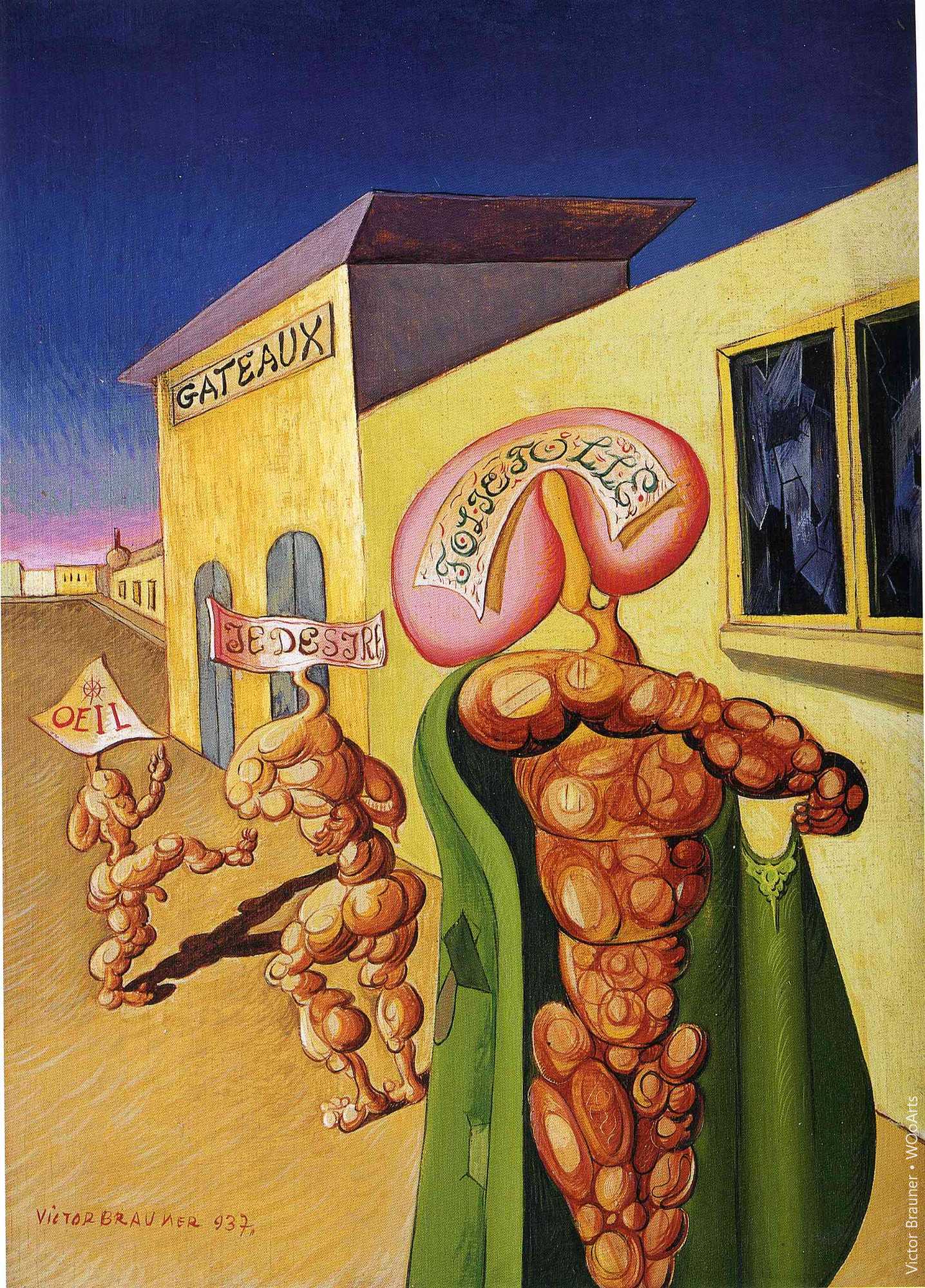Victor Brauner: Surrealist Alchemist and Visionary Painter
Victor Brauner, a Romanian-born surrealist painter, born on June 15, 1903, in Piatra Neamț, left an indelible mark on the 20th-century art world. Renowned for his enigmatic and dreamlike canvases, Brauner’s work weaves together myth, symbolism, and the esoteric. This article delves into the life, artistic evolution, and enduring legacy of Victor Brauner.

Early Life and Formative Years
Victor Brauner’s artistic journey began against the backdrop of a tumultuous period in European history. Raised in a Jewish family, Brauner’s early exposure to mystical and occult ideas, as well as the vibrant cultural scene in Bucharest, laid the foundation for his future artistic explorations. Tragically, in 1924, Brauner lost his left eye in a childhood accident, an event that would significantly influence his art and later become a recurring motif in his paintings.
Paris and the Surrealist Movement
In 1925, Brauner moved to Paris, the epicenter of the burgeoning Surrealist movement led by André Breton. Embracing the Surrealist ethos, Brauner’s early works displayed a fascination with automatism, a technique that allowed the unconscious mind to guide the creative process. Influenced by the works of Giorgio de Chirico and Max Ernst, Brauner’s paintings began to feature mysterious, fantastical elements and symbolic imagery.

Significant Works and Symbolism
Brauner’s paintings often incorporated rich symbolism, drawing inspiration from mythology, alchemy, and his own dreams. One of his notable works, “The Surrealist Chevalier,” is a striking example of his ability to blend personal narrative with surrealism. The recurrent theme of the half-man, half-beast figure in Brauner’s art reflects his fascination with the transformative and symbolic potential of hybrid creatures.
World War II and Exile
The outbreak of World War II forced Brauner into a period of exile. Settling in the United States, he continued to produce art that reflected the anxieties and uncertainties of the time. His works from this period, such as “The Inner Voice” and “Saint at the Gates of Hell,” delve into the complexities of the human psyche and the existential challenges posed by war and displacement.
Return to Paris and Post-War Expression
After the war, Brauner returned to Paris and reconnected with the Surrealist movement. His art underwent a subtle transformation, marked by a shift towards a more vivid palette and a renewed exploration of mystical and esoteric themes. Brauner’s fascination with the occult and his interest in alchemical symbolism became increasingly prominent, as seen in works like “Le Combat des Nouages” (The Battle of Clouds).

Alchemical Imagery and Personal Mythology
Victor Brauner’s paintings often incorporated alchemical symbols, reflecting his interest in the transformative and symbolic nature of artistic creation. His personal mythology, shaped by his experiences, dreams, and esoteric interests, manifested in works like “Self-Portrait with Enigmatic Symbols.” This introspective piece serves as a visual autobiography, offering viewers a glimpse into Brauner’s inner world.
Legacy and Impact
Victor Brauner’s impact on surrealism and 20th-century art is evident in the fusion of the personal and the symbolic within his paintings. His ability to create a visual language that transcends the boundaries of reality and taps into the collective unconscious influenced subsequent generations of artists. Brauner’s legacy endures not only in his paintings but also in the philosophical depth and imaginative richness he brought to the Surrealist movement.
Conclusion
Victor Brauner’s art is a testament to the power of the imagination and its ability to transform personal experiences into universally resonant symbols. His contributions to surrealism, marked by a deep engagement with mythology, alchemy, and the mysteries of the mind, continue to captivate art enthusiasts and inspire those who seek to explore the boundless realms of the human psyche through visual expression.
